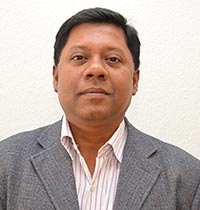
How NGOs facilitate livelihood schemes thru social media
 In the age of smartphones, hashtags, and reels, development communication has undergone a profound transformation. In Bangladesh, where NGOs have long played a central role in livelihood enhancement among the rural and urban poor, the convergence of participatory development with digital media-especially social media-has opened new avenues for empowerment, voice, and agency.
In the age of smartphones, hashtags, and reels, development communication has undergone a profound transformation. In Bangladesh, where NGOs have long played a central role in livelihood enhancement among the rural and urban poor, the convergence of participatory development with digital media-especially social media-has opened new avenues for empowerment, voice, and agency.
By integrating the participatory principles of Robert Chambers and the emancipatory pedagogy of Paulo Freire, we can understand how digital platforms are reshaping the landscape of development communication, particularly in NGO-led livelihood initiatives.
The entry of social media into this terrain has accelerated these shifts in remarkable ways. NGOs in Bangladesh now routinely use platforms such as Facebook, YouTube, TikTok, and WhatsApp to facilitate livelihoods training, promote local entrepreneurship, and build networks of solidarity.

Rural women engaged in handicrafts, tailoring, or food processing increasingly use social media to market their products, share success stories, and build peer-to-peer learning communities. What was once limited to physical gatherings at union centers or training halls now spills over into digital spaces that offer greater reach and immediacy.
For instance, NGOs working with rural youth on digital literacy or freelancing often use short-form video content to make tutorials, showcase achievements, or generate community-based awareness. These videos, often created by the youth themselves, become tools for inspiration and learning-embodying Freire’s dialogic model where learners become teachers and vice versa.
“This digital participatory turn has enabled new forms of “voice” for groups traditionally excluded from mainstream development discourse. Women, youth, indigenous communities, and persons with disabilities now have more platforms to articulate their challenges and innovations”
However, this transformation is not without challenges. The use of social media for development is deeply embedded in structural inequalities. Access to devices, internet connectivity, digital literacy, and gender norms influence who can participate, how, and to what extent. In many rural areas, women may face restrictions on smartphone use or may only have access to digital spaces under male supervision.
WhatsApp groups moderated by trained facilitators now serve as virtual village forums where participants can discuss prices, share tips, and resolve disputes in real time. These innovations echo Chambers’ insistence on reversals of learning and behavior-where outsiders learn from insiders, and where development is shaped by those who live it.
Social media also enhances what Freire called the “praxis” of development: reflection and action in continuous dialogue. Livelihood program participants who document their entrepreneurial journey-be it a backyard poultry business, an online boutique, or a solar-powered irrigation solution-engage in a process of naming their world.
This act of narrating one’s experience publicly not only strengthens self-efficacy but also invites collective identification and critique. Others see, relate, and respond. A woman in Rangpur posting a video about climate-resilient farming may trigger responses from women in Khulna or Cox’s Bazar, leading to cross-regional solidarity that transcends the limitations of geography and caste.
In this sense, digital participatory development in Bangladesh is not just about dissemination or access-it is about democratizing knowledge, redefining expertise, and transforming relations of power. When rural artisans challenge exploitative middlemen by directly selling on Facebook, or when unemployed youth in Sylhet monetize their digital skills by freelancing internationally, these are not isolated success stories. They represent shifts in the architecture of livelihood itself-from dependency to autonomy, from local to global, and from passive reception to strategic self-representation.
Yet the development community must remain critically engaged. Digital platforms, while enabling, are not inherently emancipatory. They are shaped by corporate logics, surveillance risks, and socio-cultural power relations. NGOs must therefore avoid falling into the trap of techno-solutionism and instead approach digital development as a deeply political process. This includes listening to communities, fostering collective digital literacy, resisting extractive data practices, and advocating for digital rights and protections.
The intersection of participatory development and social media in Bangladesh’s NGO-led livelihood programs marks a profound evolution in the praxis of empowerment. Inspired by Chambers’ humility and Freire’s vision of liberation, digital platforms are no longer mere tools-they are arenas of struggle, learning, and transformation. To “click to empower” is not just to upload a story or join a training-it is to engage in a participatory, critical, and collective process of shaping one’s future. In the hands of the marginalized, the smartphone is not simply a device; it becomes a weapon of dignity, visibility, and change.
The writer is a researcher and development worker

